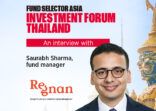The manager of the Luxembourg-domiciled Global Equity Target Income fund said he believes both countries could become like Hong Kong, China, Taiwan and Singapore, which have traditonally paid comparatively high dividends.
Japanese companies are becoming much more capital sensitive and shareholder friendly now than during the 1990s and early 2000s, when they were the best companies from an operating efficiency perspective, but worst from a capital efficiency perspective, Iaccarino said in an interview with Fund Selector Asia.
In regards to Korea, government measures that impose heavier taxes on companies’ cash reserves could promote a dividend culture in the country.
“This is a clear sign that government wants to promote a dividend culture in Korea following the example of Japan. Korea could be one area that could be interesting that we are investigating, outside the more traditional dividend friendly countries.”
He cited Samsung as an example of a possible opportunity.
“The company is completely disregarded because of competitive headwinds coming from Chinese manufacturers of low-end smartphones, and saturation of the high-end smartphone market. But the company has good cash [balance], and after stabilising their business could increase the dividend.”
Japan’s pension fund push
Japan is the second most favoured country with a 10% allocation in Iaccarino’s global equity income fund portfolio.
“Japan, which is not considered traditionally as dividend friendly, has improved thanks to pressure coming from foreign investors. Now further pressure is coming from domestic investors both institutional and retail.”
The Tokyo stock market is set for Japan’s Government Pension Investment Fund, the world’s largest pension fund, to reallocate from bonds into equities. Other Japanese pension funds are expected to follow the leader, and the demand for dividend-paying stocks will likely increase, he said.
On the retail side, demand will also likely rise for dividend-paying stocks. Japan’s introduction of a saving scheme for individuals, called the Nippon Individual Savings Account, will allow individuals who invest in stocks and investment trusts to be eligible for tax exemptions of up to five years on their financial gains.
Sector selection
Iaccarino finds dividend opportunities across many sectors in Japan.
“Return on invested capital is very crucial for creating the value that we see in the companies. Interesting sectors should combine both the income story and the cyclical and reflationary trend, for example, trading, financial, real estate and consumer.”
Banks and financial services companies are strong from a capital perspective and can offer dividends, and the auto sector is a good dividend payer with cyclical exposure, he added.
REITs pay dividends and provide exposure to asset reflation.
One sector that has less appeal is healthcare despite an ageing population and dividend payouts.
“From a global perspective, this sector in Japan has no big catalyst and lacks cyclical exposure.”
Asia overview
Dividends are embedded in many regional markets. China, Hong Kong, Singapore and Taiwan, for example, typically provide dividend yields of 4%, which he said compares well with the global standard and with local government bond yields.
The percentage of earnings paid to shareholders in dividends (the dividend payout ratio) in Asia is around 50% compared to 70% in Europe and 40% in the US and Japan.
In emerging markets, dividends tend to be more cyclical, meaning the dividend is closely linked to EPS, compared with developed markets, where companies tend to keep dividends more stable and a flexible payout ratio absorbs the EPS volatility, Iaccarino said.
In China, dividend opportunities are mostly driven by banks and telecom companies while in Taiwan, it is mostly technology companies. Singapore is a mix between technology, banks and telecom.
“Since we are currently looking for more stability of dividend, in Asia we have a very small exposure,” he said.
The fund is mostly exposed through Chinese banks and has recently reduced exposure to Singapore’s bank and telecom sectors.
Income theme not short-term
Income investing has become popular recently because of the low interest rate environment and the manager believes this is a long-term trend.
“Income demand is not short-term fashionable topic, but there are structural trends that are driving it.
“People are living longer and will have a longer retirement and higher healthcare expenses. Governments are in less of a position to provide these services due to higher public debt, so you need to refer to private sector alternatives. But the private providers are more regulated after the financial crisis, limiting their income-generating power.
“In addition to these secular trends, there are some cyclical factors like low disposable income and higher unemployment, which drive the need for supplementary income sources.”
Product and portfolio positioning
The global equity target income fund seeks to achieve income with a secondary objective of capital appreciation over the medium to long-term by investing in companies worldwide that offer above average dividends.
As per the September factsheet, the overall portfolio dividend yield was 3.7%. The scheme had 81 holdings in the portfolio with the top 10 accounting for 14.7% of the fund’s assets.
The manager believes the best country bet is in the US, which accounts for 35% of the portfolio.
“The US is usually perceived as a low dividend country. This is optically true. But, it doesn’t mean that there are no high yielding growing stocks. There is a trend toward an improving dividend culture in the US as well as in Japan and Korea.”
A look at the performance of the fund as against the category of international funds:


















